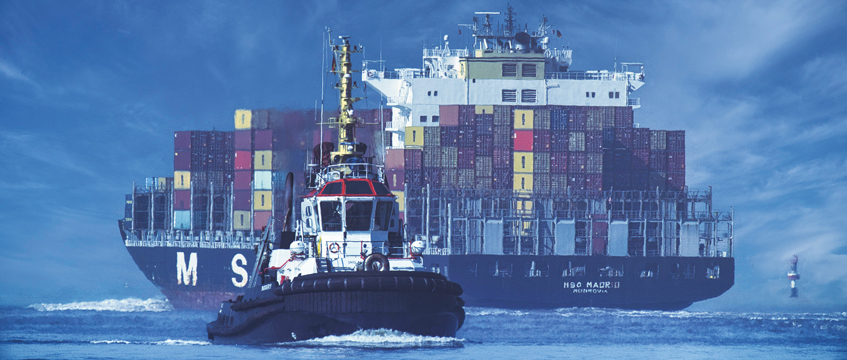Sarah Cardew rounds up the latest on the development of freeports in the UK.
In its February 2020 consultation document, the government set out that it intended the UK’s new freeports to boost trade, jobs and investment; act as a “hotbed” of innovation; and be a cornerstone of the government’s plans to “level up”. While some progress has been made, the issue of whether these aims have been achieved, and whether the system really supports levelling up, is hotly debated. There are obvious benefits of investing in these localised areas, but take-up is lower than might have been expected. What we can be sure of is that those looking to invest should do so before a potential change in government.
What is a freeport?
At a basic level, a freeport is a geographically distinct area benefiting from generous customs duties and tax benefits. In the 2021 Budget, the government announced eight English freeports (East Midlands, Felixstowe & Harwich, Humber, Liverpool city region, Plymouth & South Devon, Solent, Teesside and Thames), as well as two in Wales (Celtic and Anglesey) and two in Scotland (Inverness & Cromarty Firth and Firth of Forth). No further plans were announced to create any additional freeports, and nor have any been since then.
The main tax reliefs in freeports relate to stamp duty land tax; enhanced structures and buildings allowances; enhanced capital allowances; employer national insurance contributions; business rates relief; local retention of business rates; and customs sites benefiting from various customs reliefs and facilitations.
Reaping the benefits
Stamp duty land tax
An important and valuable relief for investors in property is the ability to buy property in a freeport site free of any SDLT. A great incentive, it is vital to remember that the purchase of the freeport land must be on or before 30 September 2026, so potential land buyers should be planning now.
Capital allowances
There are accelerated allowances available in relation to qualifying expenditure incurred in a freeport. Property owners should note, however, that these allowances must actually be claimed and that there are conditions which must be met as to what constitutes “qualifying expenditure”.
Employer NICs
Employers operating in a freeport tax site qualify for zero-rated NICs for three years for new employees, but employers should note that they too have to make an election to claim.
To qualify, employers should take care to ensure that they are within the relevant time limits for new employments. An employment must start on or after 6 April 2022 but no later than 5 April 2026 and count as “new”, meaning the earner is not already employed by the freeport employer or a person connected to a freeport employer at any time during the previous two years. Any employment transferred under the Transfer of Undertakings (Protection of Employment) Regulations 2006 is also not covered. Employers beware: the relief is only available for three years starting from the first day of employment.
In addition, an employer must be a freeport employer, ie they must have a business premises in a freeport tax site, and must reasonably expect that the earner will spend at least 60% of their employed time in that single designated freeport tax site.
Business rates relief
While high streets across the UK are struggling under growing business rates, there is full relief for businesses operating in a freeport site which is administered by local authorities, the eligibility for which is on a case-by-case basis. The relief is available for five years from the point at which the business first received relief, and is available to all new businesses, as well as certain existing businesses. It applies to each qualifying premises.
For an existing business relocating into a freeport, however, there are more stringent conditions to be met, and local authorities have full discretion to devise and apply any additional tests they see fit before granting this relief.
Customs duties and import VAT
Businesses operating in designated freeport customs sites can suspend import VAT on goods brought into the freeport. There are also customs duties-related advantages. However, it is important to note that a freeport customs site may not necessarily be the same thing as a designated freeport tax site,
so importers will need to check.
What has the take-up been?
The government published an annual report in December 2022 in which it cited new investment across the country. In Humber there will be multi-million-pound investment to establish Europe’s first rare earth processing hub; in Teesside there will be investment into a multi-million-pound offshore wind manufacturing facility; the East Midlands will see the expansion of the Maritime Rail Freight Terminal; and in Solent we can expect the delivery of a Solent Maritime Innovation Hub.
These are just a few examples that demonstrate there has been some take-up from business. The government has tried to raise awareness of freeports and highlight opportunities to business for investment, but there is definitely more to be done if take-up is to increase before the scheme ends. Businesses (and their advisers) need to be aware of the potential for tax-efficient investment in freeports if they are to reap the many possible benefits.
Freeports will be the subject of ongoing political debate, not least with a UK general election on the horizon. There are many, including opposition parties, who argue against freeport sites, saying that because the tax benefits focus on a specific geographical area, only certain businesses are able to access those benefits, and therefore there is no “levelling up”.
Will freeports survive a change of government? Businesses would be wise to invest sooner rather than later.
Sarah Cardew is a partner at Stevens & Bolton LLP










